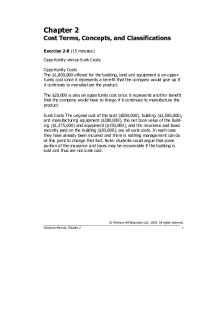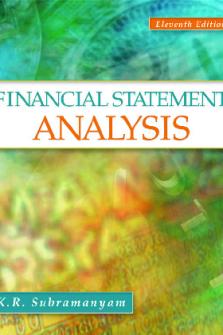Chapter 2 - Foundations of Financial Management 11th Canadian edition PDF

| Title | Chapter 2 - Foundations of Financial Management 11th Canadian edition |
|---|---|
| Author | meg la |
| Course | Introduction to Finance |
| Institution | Concord University |
| Pages | 27 |
| File Size | 517.8 KB |
| File Type | |
| Total Downloads | 90 |
| Total Views | 135 |
Summary
Foundations of Financial Management 11th Canadian edition...
Description
Chapter 2 Discussion Questions 2-1.
The price-earnings ratio will be influenced by the earnings and sales growth of the firm, the risk or volatility in performance, the debt-equity structure of the firm, the dividend payment policy, the quality of management, and a number of other factors. The ratio tends to be future-oriented, and will be higher the more positive the outlook
2-2.
Book value per share is arrived at by taking the cost of the assets and subtracting out liabilities and preferred stock and dividing by the number of common shares outstanding. It is based on the historical costs of the assets. Market value per share is based on current assessed value of the firm in the marketplace and may bear little relationship to original cost. Besides the disparity between book and market value caused by the historical cost approach, other contributing factors are the growth prospects for the firm, the quality of management, and the industry outlook. To the extent these are quite negative, or positive, market value may differ widely from book value.
2-3.
The only way amortization generates cash flows for the company is by serving as a tax shield against reported income. Allowable amortization for tax purposes is known as capital cost allowance (CCA). In most instances this will be different than accounting amortization. This non-cash deduction may provide cash flow equal to the tax rate times the amortization charged. This much in taxes will be saved, while no cash payments occur.
2-4.
Accumulated amortization is the sum of all past and present amortization charges, while amortization expense is the current year's charge. They are related in that the sum of all prior amortization expense should be equal to accumulated amortization (subject to some differential related to asset write-offs).
2-5.
The balance sheet, for private companies using ASPE, is based on historical costs. When prices are rising rapidly, historical cost data may lose much of their meaning particularly for plant, equipment and inventory. However, the balance sheet of public companies using IFRS is based on market values and opposite order whereby non-current assets are listed ahead of current assets. The same applies to the liabilities section that lists non-current liabilities first.
2-6.
The income statement and balance sheet are based on the accrual method of accounting, which attempts to match revenues and expenses in the period in which they occur. However, accrual accounting does not attempt to properly assess the cash flow position of the firm. The statement of changes in financial position fulfills this need. The values on these statements will differ for public companies using IFRS compared to private firms.
2-7.
The sections of the statement of cash flows and sources of information are: Cash flows from operating activities (Income statement) Cash flows from investing activities (non-current assets section of balance sheet) Cash flows from financing activities (non-current liabilities and equity section)
Foundations of Fin. Mgt. 10Ce
2 - 27
Block, Hirt, Danielsen, Short, Perretta
Chapter 2 The payment of cash dividends falls into the financing activities category. 2-8.
We can examine the various sources that were utilized by the firm as indicated on the statement. Possible sources for the financing of an increase in assets might be profits, increases in liabilities, or decreases in other asset accounts.
2-9.
Free cash flow is equal to:
Cash flow from operating activities Minus:
Capital expenditures required to maintain the productive capacity of the firm.
Minus:
Dividends (required to maintain the payout on common stock and to cover any preferred stock obligation).
The analyst or banker normally looks at free cash flow to determine whether there are sufficient excess funds to pay back the loan associated with the leveraged buy-out (a company with limited cash acquiring stocks of another company to acquire control). 2-10. Interest expense is a tax deductible item to the corporation, while dividend payments are not. The net cost to the corporation of interest expense is the amount paid multiplied by the difference of (one minus the applicable tax rate). The firm must bear the full burden of the cash outflow of dividend payments because they are not an expense, but rather a distribution out of retained earnings.
Internet Resources and Questions 1. 2. 3. 4. 5. 6. 7.
www.cica.ca, www.cpa.ca www.cma-canada.org www.cga-canada.org www.ifrs.org. www.kpmg.ca/taxi www.pwc.com/ca/tax www.cra-arc.gc.ca
Foundations of Fin. Mgt. 10Ce
2 - 27
Block, Hirt, Danielsen, Short, Perretta
Chapter 2 Problems (The following solutions use the 2014 tax rates or rates given in the text. The 2013 rates are also shown but subject to change).
2-1.
Bradley
Bus
Inc.
a. Last Year Earnings after taxes Shares outstanding Earnings per share ($600,000/300,000 shares)
$600,000 300,000 $2.00
b. Current Year Earnings after taxes ($600,000 × 125%) Shares outstanding (300,000 + 40,000) Earnings per share ($750,000/340,000 shares)
$750,000 340,000 $2.21
2-2.
Dover River Company
a. Operating profit (EBIT)......................... Interest expense................................. Earnings before taxes (EBT).................. Taxes.................................................. Earnings after taxes (EAT)...................... Preferred dividends ........................... Available to common shareholders........
$200,000 10,000 190,000 61,250 128,750 18,750 $110,000
Common dividends............................ $ 30,000 Increase in retained earnings.................. $ 80,000 EPS = Earnings available to common shareholders/ Number of shares of common stock outstanding = $110,000/20,000 shares = $5.50 per share Dividends per Share = $30,000/20,000 shares = $1.50 per share b. Payout Ratio=Dividend per share/Earnings per share =1.50/5.50 per share = 27.27% c. Increase in retained earnings = $80,000 Foundations of Fin. Mgt. 10Ce
2 - 27
Block, Hirt, Danielsen, Short, Perretta
Chapter 2 d. Price/earnings ratio= $26.40/ $5.50 = 2-3. Far East Fast Foods
4.8 ×
a. 2014 Earnings after taxes Shares outstanding Earnings per share
$230,000 200,000 $1.15
b. 2015 Earnings after taxes ($230,000 × 125%) Shares outstanding Earnings per share
$287,500 230,000 $1.25
2-4.
Sheridan Travel
a. EPS = $600,000 = $2.00 per share 300,000 b. New Net Income: $600,000 x 125% = $750,000 Shares: 300,000 + 40,000 = 340,000 shares New EPS = $750,000 = $2.21 per share 340,000
Foundations of Fin. Mgt. 10Ce
2 - 27
Block, Hirt, Danielsen, Short, Perretta
Chapter 2 2-5.
Moore Enterprise/ Kipling Corporation Moore
Kipling
Gross profit.........................
$880,000
$880,000
Selling and adm. expense...
120,000
120,000
760,000
760,000
Amortization.......................
360,000
60,000
Operating profit..................
400,000
700,000
Taxes (40%)........................
160,000
280,000
Earnings after-taxes..............
240,000
420,000
Plus: Amortization Expense...
360,000
60,000
$600,000
$480,000
Cash Flow...........................
Moore had $300,000 more in amortization, which provided $120,000 (0.40 × $300,000) more in cash flow. Moore paid 0.40×300,000 (difference in operating income) = $120,000 less taxes.
Foundations of Fin. Mgt. 10Ce
2 - 27
Block, Hirt, Danielsen, Short, Perretta
Chapter 2 2-6.
Yes, Aztec Book Company made a profit of $13,920 for the year ended December 31, 2015. Aztec Book Company Income Statement For the Year ended December 31, 2015 Sales (1,400 books at $84 each).................................... $117,600 Cost of goods sold (1,400 books at $63 each).............. 88,200 Gross Profit............................................................... 29,400 Selling expense.............................................................. 2,000 Amortization expense.................................................... 5,000 Operating profit......................................................... 22,400 Interest expense.............................................................. 5,000 Earnings before taxes................................................ 17,400 Taxes @ 20%................................................................. 3,480 Earnings after taxes.................................................... $13,920
Foundations of Fin. Mgt. 10Ce
2 - 27
Block, Hirt, Danielsen, Short, Perretta
Chapter 2 2-7.
Carr Auto Wholesalers Income Statement For the Year ended December 31, 2015
a. Sales…………………………………………….. Cost of goods sold @ 65%................................... Gross profit………………………………….. Selling and administration expense @ 9%......... Amortization expense…………………………... Operating profit……………………………… Interest expense…………………………………. Earnings before taxes………………………… Taxes @ 30%........................................................ Earnings after taxes……………………………
$900,000 585,000 315,000 81,000 10,000 224,000 8,000 216,000 64,800 $151,200
b. Sales…………………………………………….. Cost of goods sold @ 60%.................................... Gross profit…………………………………... Selling and administration expense @ 12%......... Amortization expense…………………….…….. Operating profit……………………………… Interest expense…………………………………. Earnings before taxes………………………… Taxes @ 30% …………………………………… Earnings after taxes……………………………
$1,000,000 600,000 400,000 120,000 10,000 270,000 15,000 255,000 76,500 $ 178,500
Ms. Hood’s idea will increase profitability.
Foundations of Fin. Mgt. 10Ce
2 - 27
Block, Hirt, Danielsen, Short, Perretta
Chapter 2 2-8.
Income Statement
Sales Cost of goods sold Gross profit Selling and administrative expense Amortization expense Operating profit Interest expense Earnings before taxes Taxes Earnings after taxes Preferred stock dividends Earnings available to common shareholders Shares outstanding Earnings per share
Foundations of Fin. Mgt. 10Ce
2 - 27
Block, Hirt, Danielsen, Short, Perretta
Chapter 2 2-9.
David’s Magic Stores
a. Operating profit (EBIT)......................... Interest expense................................. Earnings before taxes (EBT).................. Taxes.................................................. Earnings after taxes (EAT)...................... Preferred dividends ........................... Available to common shareholders........
$210,000 30,000 180,000 59,300 120,700 24,700 $ 96,000
Common dividends............................ Increase in retained earnings..................
36,000 $ 60,000
EPS
= Earnings available to common shareholders Number of shares of common stock outstanding = $96,000/16,000 shares = $6.00 per share
Dividends per Share = $36,000/16,000 shares = $2.25 per share b. Payout ratio = $2.25/ $6.00 = .375 = c. Increase in retained earnings = d. Price/earnings ratio = $90/ $6.00 = 2-10.
37.5% $60,000 15.0
Thermo Dynamics
a. Retained earnings, December 31, 2015............. Less: Retained earnings, December 31, 2014.... Change in retained earnings............................... Add: Common stock dividends.......................... Earnings available to common shareholders......
$450,000 400,000 50,000 25,000 $ 75,000
b. Earnings per share
= $75,000/ 20,000 shares = $3.75 per share c. Payout ratio = $25,000/ $75,000 = .333 = 33.33% d. Price/earnings ratio = $30.00/ $3.75 = 8.0 × Foundations of Fin. Mgt. 10Ce
2 - 27
Block, Hirt, Danielsen, Short, Perretta
Chapter 2 2-11.
Brandon Fast Foods Inc.
a. Operating Income – Taxes – Interest = Net income after taxes = $210,000 – $59,300 – $30,000 = $120,700 Net income after taxes – Preferred dividends = Earnings available to common shareholders = $120,700 – $24,700 = $96,000 EPS = $96,000 / 16,000 shares = $6 EPS Common Share = Div. paid /shares = $36,000/16,000 shares = $2.25 Dividend per Share b. Increase in RE = Income – Dividends – Preferred Dividend = $120,700 – $36,000 – $24,700 = $60,000.
2-12.
Balance Sheet Items
Common stock – noncurrent Accounts payable – current Preferred stock – noncurrent Prepaid expenses – current Bonds payable – noncurrent Inventory – current Investments – noncurrent Marketable securities – current Accounts receivable – current Plant and equipment – noncurrent Accrued wages payable – current Retained earnings – noncurrent
Foundations of Fin. Mgt. 10Ce
2 - 27
Block, Hirt, Danielsen, Short, Perretta
Chapter 2 2-13.
Balance Sheet Assets
Current Assets Cash................................................... Marketable securities......................... Accounts receivable........................... Less: Allowance for bad debts...... Inventory............................................ Total Current Assets................. Other Assets: Investments........................................ Capital Assets: Plant and equipment.......................... Less: Accumulated amortization.. Net plant and equipment................... Total Assets...........................................
$ 10,000 20,000 $48,000 6,000 42,000 66,000 138,000 20,000 680,000 300,000 380,000 $538,000
Liabilities and Shareholders' Equity Current Liabilities: Accounts payable.............................. Notes payable.................................... Total current Liabilities................ Long-Term Liabilities............................ Bonds payable................................... Total Liabilities............................. Shareholders' Equity: Preferred stock, 1,000 shares outstanding….... Common stock, 100,000 shares outstanding.... Retained earnings............................................. Total Shareholders' Equity........................... Total Liabilities and Shareholders' Equity……....
Foundations of Fin. Mgt. 10Ce
2 - 27
$ 35,000 33,000 68,000 136,000 204,000 50,000 188,000 96,000 334,000 $538,000
Block, Hirt, Danielsen, Short, Perretta
Chapter 2 Bengal Wood Company
2-14.
Current assets…………………….. Capital assets……………………… Total assets……………………….. – Current liabilities…………….….. – Long-term liabilities…………….. Shareholders’ equity………….…… – Preferred stock obligation……….. Net worth assigned to common……
$100,000 140,000 240,000 60,000 90,000 90,000 20,000 $ 70,000
Common shares outstanding……… Book value (net worth) per share…
17,500 $4.00
2-15.
Monique’s Boutique
a. Total assets...................................... – Current liabilities......................... – Long-term liabilities.................... Shareholders' equity........................ – Preferred stock.............................. Net worth assigned to common.......
$600,000 150,000 120,000 330,000 75,000 $255,000
Common shares outstanding…............ Book value (net worth) per share….....
30,000 $8.50
b. Earnings available to common.........
$33,600
Shares outstanding........................... Earnings per share............................
30,000 $1.12
P/E ratio × earnings per share 12 × $1.12
= price = $13.44
c. Market value per share (price) to book value per share $13.44/$8.50 = 1.58 Foundations of Fin. Mgt. 10Ce
2 - 27
Block, Hirt, Danielsen, Short, Perretta
Chapter 2 2-16.
Phelps Labs
a. Total assets...................................... – Current liabilities......................... – Long-term liabilities.................... Shareholders' equity........................ – Preferred stock.............................. Net worth assigned to common.......
$1,800,000 595,000 630,000 575,000 165,000 $ 410,000
Common shares outstanding…............ Book value (net worth) per share….....
20,000 $20.50
b. Earnings available to common.........
$45,000
Shares outstanding........................... Earnings per share............................
20,000 $2.25
P/E ratio × earnings per share = price 13 × $2.25 = $29.25 c. Market value per share (price) to book value per share $29.25/$20.50 = 1.43
2-17. 2 × book value 2 × $20.5 P/E ratio
Foundations of Fin. Mgt. 10Ce
Phelps Labs (Continued) = price = $41.00 = $41.00/$2.25 = 18.22
2 - 27
Block, Hirt, Danielsen, Short, Perretta
Chapter 2 2-18.
Appropriate Financial Statement 1. 2. 3. 4. 5. 6. 7.
Balance Sheet (BS) Income Statement (IS) Current Assets (CA) Capital Assets (Cap A) Current Liabilities (CL) Long-Term Liabilities (LL) Shareholders Equity (SE)
Indicate Whether the Item is on Balance Sheet or Income Statement BS IS BS BS BS
If the Item is on Balance Sheet, Designate Which Category SE
BS IS IS
CL
BS BS BS BS IS IS BS BS IS BS
CA CL CA Cap A
Foundations of Fin. Mgt. 10Ce
CA SE LL
CA CL CL
2 - 27
Item Retained earnings Income tax expense Accounts receivable Common stock Bonds payable, maturity 2022 Notes payable (6 months) Net income Selling and administrative expenses Inventories Accrued expenses Cash Plant and equipment Sales Operating expenses Marketable securities Accounts payable Interest expense Income tax payable
Block, Hirt, Danielsen, Short, Perretta
Chapter 2 2-19.
Cash Flow Impact
Increase in inventory -- decreases cash flow (use) Decrease in prepaid expenses -- increases cash flow (source) Decrease in accounts receivable -- increases cash flow (source) Increase in cash -- decreases cash flow (use) Decrease in inventory -- increases cash flow (source) Dividend payment -- decreases cash flow (use) Increase in short-term notes payable -- increases cash flow (source) Amortization expense – does not affect cash flow (However in the cash flow statement it is added to net income to determine cash provided by operations) Decrease in accounts payable -- decreases cash flow (use) Increase in long-term investments -- decreases cash flow (use)
2-20.
Jupiter Corporation – Saturn Corporation Jupiter $700,000 160,000 240,000 300,000 120,000 180,000 240,000 $420,000
Gross profit......................... Selling and adm. expense... Amortization....................... Operating profit.................. Taxes (40%)........................ Earnings after taxes.............. Plus amortization expense... Cash Flow...........................
Saturn...
Similar Free PDFs

Foundations of Financial Management
- 47 Pages

Ch2 - Financial Management Chapter 2
- 49 Pages
Popular Institutions
- Tinajero National High School - Annex
- Politeknik Caltex Riau
- Yokohama City University
- SGT University
- University of Al-Qadisiyah
- Divine Word College of Vigan
- Techniek College Rotterdam
- Universidade de Santiago
- Universiti Teknologi MARA Cawangan Johor Kampus Pasir Gudang
- Poltekkes Kemenkes Yogyakarta
- Baguio City National High School
- Colegio san marcos
- preparatoria uno
- Centro de Bachillerato Tecnológico Industrial y de Servicios No. 107
- Dalian Maritime University
- Quang Trung Secondary School
- Colegio Tecnológico en Informática
- Corporación Regional de Educación Superior
- Grupo CEDVA
- Dar Al Uloom University
- Centro de Estudios Preuniversitarios de la Universidad Nacional de Ingeniería
- 上智大学
- Aakash International School, Nuna Majara
- San Felipe Neri Catholic School
- Kang Chiao International School - New Taipei City
- Misamis Occidental National High School
- Institución Educativa Escuela Normal Juan Ladrilleros
- Kolehiyo ng Pantukan
- Batanes State College
- Instituto Continental
- Sekolah Menengah Kejuruan Kesehatan Kaltara (Tarakan)
- Colegio de La Inmaculada Concepcion - Cebu













